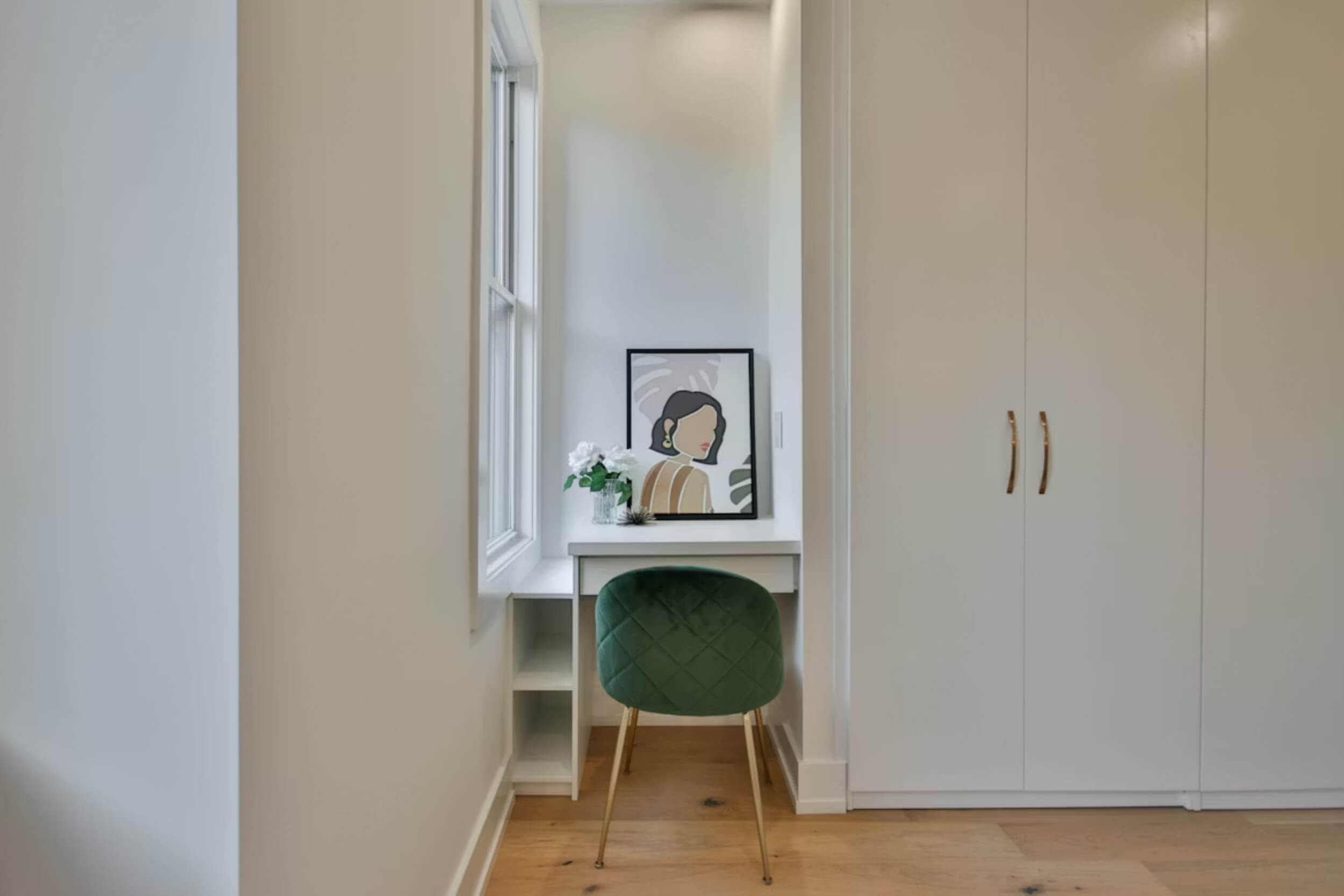There’s a pause before you say “yes” to something that matters — a new job, a hard conversation, a fresh start. You feel it in your chest. A twist of nerves. A second guess. That pause? That’s the fear of change showing up.
The truth is, we like the idea of growth… until it asks us to actually do something different. And that’s where most people stop — right at the edge of something good.
Growth doesn’t just happen by luck or time. It shows up when you face the fear, even if your voice shakes or your hands feel heavy. You push through anyway.
This article walks you through what fear of change really looks like, how it holds you back, and the clear steps to move forward — one bold choice at a time.
What Fear of Change Really Looks Like
Fear of change isn’t always loud. It doesn’t always show up as anxiety or dramatic meltdowns. Sometimes, it’s just you saying, “I’ll do it later” — over and over again. You scroll, you plan, you think. But you don’t move. You tell yourself you’re “getting ready,” but deep down, you’re avoiding the unknown. Saying it’s “not the right time” becomes a habit, not a fact.
When Fear Feels Safer Than Change
The mind wants to keep you safe. So when change feels risky, your brain pushes you toward what’s familiar — even if that familiar thing isn’t working anymore. You stay in the job that drains you. You keep the routine that leaves you stuck. That’s not laziness — it’s fear doing its job. But the fear of change can quietly become the reason you don’t grow. And the longer you wait, the harder it feels to start.
Why Growth Feels Scary — and Why That’s Normal
You’re not weak for feeling uncomfortable when you grow. Growth asks you to step outside the life you’ve gotten used to. That doesn’t mean it’s bad — it just means it’s unfamiliar. Your old habits, your old beliefs, and even your old identity might not fit anymore. And it’s totally normal to feel a little lost when that happens.
The Body Keeps Score
Tight shoulders. A nervous stomach. A racing heart. The fear of change doesn’t just live in your thoughts — it shows up in your body too. That physical tension can trick you into thinking, “This must be wrong.” But really, it means something important is happening. It’s your signal that this choice matters. Feeling that discomfort doesn’t mean stop — it just means you’re on the edge of something new.
Hidden Ways Fear of Change Shows Up
You’ve read every book, watched every video, and made the perfect plan. But nothing’s actually happened. When you’re stuck in research mode, it feels productive — but it’s often a quiet way fear keeps you from moving. It says, “One more thing, then I’ll start.” But growth starts when you act, not just when you prep.
You Stick With What’s Comfortable — Even When It’s Not Working
That job you’ve outgrown. That habit that drains you. You know it’s not helping, but it feels safe because it’s what you know. The fear of change convinces you that staying in place is better than taking a chance — even when that comfort is costing you joy or progress.
You Wait for Perfect Timing
There’s always something — more money, more confidence, more clarity. So you wait. But perfect timing is a myth. What you’re really waiting for is the fear to disappear. It won’t. And starting anyway is what actually builds the clarity you’re waiting on.
You Downplay What You Want
You tell yourself it’s “too much,” or “not realistic,” or “just a silly dream.” That’s fear shrinking your desires so they feel safer to carry. But minimizing your goals won’t make the fear of change go away — it just keeps you from the life you actually want.
You Redefine Change as “Too Much”
“This isn’t me.” “I’m not that kind of person.” Those thoughts can sound like honesty, but they’re often fear dressed up as identity. The fear of change makes you hold tight to the old version of yourself — even when you’re ready to grow past it.
What’s Actually at Stake When You Avoid Change
Comfort feels nice — until it becomes a cage. When you avoid change, you often stay in the same place while your needs, your dreams, and your energy slowly fade. Missed chances pile up. Relationships get stuck. That idea you had? Someone else runs with it. The fear of change might protect you from short-term discomfort, but long-term, it can cost you far more than you expect.
Risking Regret vs. Risking Discomfort
You’re always taking a risk — even when you do nothing. Choosing not to act is still a choice. One brings temporary pain; the other often brings lasting regret. The fear of change tells you to avoid discomfort. But ask yourself: Would you rather feel a little nervous now or feel stuck five years from now, wondering what could’ve happened if you tried?
How to Move Through the Fear — Not Around It
Growth doesn’t wait for fear to leave. It moves beside it. You don’t get stronger by waiting for the fear of change to go away — you get stronger by learning how to move with it.
Step 1 — Normalize the Fear Response
You’re not weak or broken because you feel scared. Fear is just your brain trying to protect you from the unknown. It means you care. It means this matters. The goal isn’t to get rid of fear — it’s to stop letting it drive every decision.
Step 2 — Ask Better Questions
Fear loves worst-case scenarios. Start flipping the script. Ask, “What if this actually works?” Or, “What will it cost me if I don’t do this?” Curiosity doesn’t erase fear, but it quiets it enough to think clearly.
Step 3 — Shift From Outcome to Process
Most people freeze because they’re focused on winning or failing. But growth doesn’t work like that. Show up. Try. Mess up. Adjust. Keep going. Progress doesn’t come from perfect outcomes — it comes from consistent steps.
Step 4 — Take Micro-Actions
Send the email. Have the conversation. Book the appointment. Action shrinks fear faster than thinking does. The more you move, the less fear has a grip.
Step 5 — Let Discomfort Teach You
What’s the fear trying to protect you from? Rejection? Embarrassment? Let it speak — but don’t let it steer. Every feeling is data. Use it to learn what matters most to you — not what to run from.
Stories of Small Brave Moves
Not every bold choice makes headlines. Sometimes the most powerful growth moments happen quietly — and they change everything.
Someone finally left a job that drained them for years. They didn’t have it all figured out, but they knew staying meant staying stuck. So they quit — unsure, but proud.
Another person booked their first therapy session. They almost canceled three times. But they showed up. Said the hard stuff. And kept coming back.
And then there’s the one who said “yes” to love after years of guarding their heart. It felt risky. But they chose connection over fear.
None of them were fearless. All of them were willing. That’s the difference. You don’t need to feel brave to do the brave thing — especially when the fear of change shows up. You just need to care more about growth than staying small.
Practical Habits That Build Your Growth Muscles
Try one thing that pushes you out of routine. Take a new way home. Order the dish you’ve never tried. Strike up a conversation you’d normally avoid. Small changes help your brain get used to discomfort — and that slowly weakens the fear of change.
Journal the Real Wins
Skip the highlight reel. Write down the effort, not just the result. “I spoke up in the meeting.” “I didn’t shut down.” Those small actions are proof that you’re moving forward — even when the fear of change is still hanging around.
Rehearse Your Next Bold Move
Picture yourself doing the hard thing. Say the words out loud. Practice in the mirror. Your nervous system needs rehearsal, not just pep talks. It helps your body believe it’s possible.
Celebrate Even the Messy Steps
Show yourself kindness when it’s not perfect. Growth often looks like one good day, one bad one, then another try. You’re building something — and every messy step still counts.
Final Thoughts on Growth and Fear
Growth never comes without a little pushback. That’s normal. If it feels uncomfortable, you’re probably doing it right.
Fear of change doesn’t mean you’re not ready — it means you’re standing in front of something that matters. And that’s a good sign.
You don’t need to wait until you feel bold or fearless. You just need to be real with yourself. Say what you want. Take one step.
Even if it’s hard right now, the version of you that comes from this effort will be stronger, clearer, and worth every stretch it took to get there.















